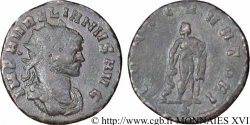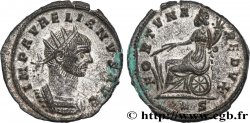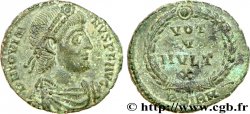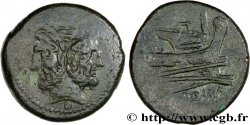- Accueil
- >
- >
v16_0658 - AURELIAN Antoninien
MONNAIES 16 (2002)
Starting price : 150.00 €
Estimate : 300.00 €
Realised price : 275.00 €
Number of bids : 2
Maximum bid : 330.00 €
Starting price : 150.00 €
Estimate : 300.00 €
Realised price : 275.00 €
Number of bids : 2
Maximum bid : 330.00 €
Type : Antoninien
Date: fin 271 - automne 272
Mint name / Town : Atelier indéterminé (Byzance)
Metal : billon
Millesimal fineness : + 20 ‰
Diameter : 21,5 mm
Orientation dies : 12 h.
Weight : 4,69 g.
Rarity : R3
Emission: 1re
Coments on the condition:
Flan large et ovale. Fêlure de frappe au revers à six heures. Jolie patine marron. Beau revers
Catalogue references :
Obverse
Obverse legend : IMP AVRELIANVS AVG.
Obverse description : Buste d’Aurélien, tête radiée, à droite, avec cuirasse, vu de trois quarts en avant (B).
Obverse translation : “Imperator Aurelianus Augustus” (Empereur Aurélien auguste).
Reverse
Reverse legend : IOVI CONSERVA-TORI// (DAUPHIN).
Reverse description : Aurélien lauré, en habit militaire, debout à droite, tenant un sceptre court de la main gauche et tendant la droite vers Jupiter nu, le manteau sur l’épaule gauche, debout à gauche, présentant un globe de la main droite et tenant une haste de la gauche.
Reverse translation : “Iovi Conservatori” (À Jupiter le protecteur).
Commentary
Poids lourd. Un seul exemplaire de ce type dans le catalogue de La Venèra.
Heavyweight. Only one example of this type in the La Venèra catalog.
Heavyweight. Only one example of this type in the La Venèra catalog.








 Report a mistake
Report a mistake Print the page
Print the page Share my selection
Share my selection Ask a question
Ask a question Consign / sell
Consign / sell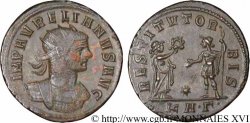
 Full data
Full data
